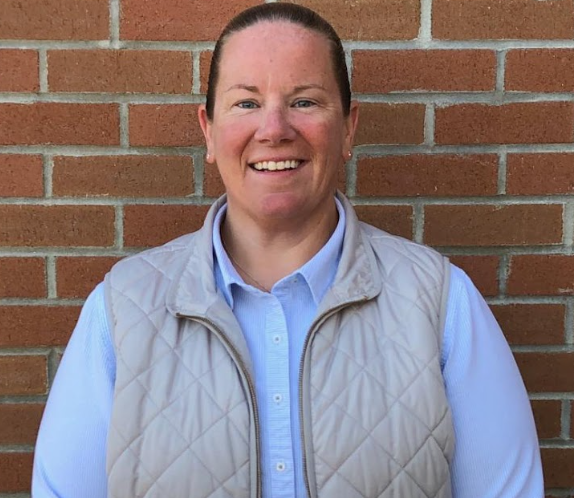What Will Become the 51st State?
June 12, 2015
When people think of the flag of the United States of America, they visualize the thirteen stripes in a red and white pattern, and the blue quadrilateral in the corner, filled with 50 white stars for fitting states.
But what if there were more than 50 stars on that flag?
It’s been over 50 years since Alaska and Hawaii were admitted to the union as the 49th and 50th states in 1959. Before that, the previous state added was Arizona, 47 years earlier in 1912.
In recent years, the idea of 50 states has been challenged, as many people have begun organizing for statehood in regions most people wouldn’t have even considered.
The first of these regions is the most well-known in the debate of statehood – the Caribbean island of Puerto Rico. Unlike the Philippines in the South Pacific, which was given its independence in the 1940s, Puerto Rico is still technically in United States possession since the Spanish-American War of 1898.
Also won in the war was Hawaii, which, over 60 years after the Spanish-American War, become the 50th U.S. state in 1959.
Puerto Ricans were given complete U.S citizenship in 1917, and almost a century later, little has changed for the status of Puerto Ricans.
The biggest problem most Puerto Ricans have with their current place in America is that they cannot vote in major elections. The 2010 court case Igartúa v the United States ruled that the Constitution does not allow voting rights to United States territories – only states. This may be in part because our Founding Fathers never intended America to become an imperialistic nation. Even so, an amendment could be added to the Constitution if it was ratified by enough states, but little desire has been expressed for this, since America has very few territories in modern times.
Puerto Rico also has nobody in Congress – neither representatives nor senators – to give them a say in what happens in the country, which they are technically a part of.
The benefit to Puerto Rico is that its citizens do not have to abide by the 16th Amendment – that is, they do not have to worry about paying federal taxes.
Recently, Puerto Ricans were given a referendum as to whether or not they would like to be admitted to the union. A shockingly large amount of people expressed the desire for statehood, showing that the desire for representation in Congress and a say in leadership wins out over freedom from taxes.
Puerto Rico is not the only piece of America longing for admittance to the union. Here’s a riddle for you – what piece of land is a part of the continental United States but not actually a part of any state, and has recently been pushing for statehood as well?
Washington, D.C. Right in between Maryland and Virginia (two of the original thirteen colonies). The District of Columbia has been the nation’s capital since 1790, and has grown from a random swamp to one of the most populated cities in the United States and one of the most renowned places in the world.
However, did you know the capital of a nation founded on complete liberty has little say in what happens in government? The twenty-third amendment, ratified in the early 1960s, gives the city delegates to send to . . . well, to D.C.
Despite this amendment, the delegates actually do little in Congress. They do not count as senators or representatives, and they cannot vote on bills. Many frustrated Washingtonians have declared that this is essentially “taxation without representation” – the very thing English colonists protested against in the eighteenth century.
There is a reason D.C. is not a state, and not a part of any state. Once again, it comes down to our Founding Fathers. They did not want any one state to have the power of the entire government in one of its cities.
What if that state seceded from the union? It seems like a ludicrous idea to us now, but the Founding Fathers’ fears were realized during the Civil War. If the District of Columbia had been a part of Virginia, it would have been lost once the slave state left the union, leaving the president and any loyal congressman fleeing north and praying against a Confederate attack.
Obviously, the threat of a second American Civil War is very low today, so Washingtonians have begun rallying for statehood. Judging on how the phrase “Taxation Without Representation” is clearly visible on the license plate of Obama’s limousine, it seems the government will have to start answering the calls for action.
The other contenders for statehood are not as widely accepted as a movement.The U.S Virgin Islands, a Caribbean archipelago purchases from Denmark during the first World War, and Guam, another island gained from the Spanish-American War, have also been brought up as possible recipients of statehood.
Speaking in terms of the continental U.S., there are actually some areas that wish to qualify for statehood.
Proposed states are nothing new for the country. The failed Mormon state of Deseret in the late 1840s and the proposed Native American state of Sequoyah in the early 1900s prove that state formation has been going on for years.
However, now that the U.S. spans from the east coast to the west coast and everything in between is a state, people have tried to start making new states out of old states.
Jefferson, by far the largest and most famous of these proposed states, would consist of southern Oregon and Northern California.
Other proposed states include South Florida, which is still exploring statehood, North Michigan, which dates back to the 1850s, and Long Island – yes, OUR Long Island (Nassau County and Suffolk County in particular) – which some legislators pushed for statehood as recently as 2008.
It isn’t clear to many when the United States will get a 50-first state, or even which state it will be. The majority of people seem to believe Puerto Rico will be the most likely candidate, but if that is true, D.C. will probably start rallying even more with the argument that they deserve statehood more that Puerto Rico because they have been a part of the United States longer.
But whether the next state is Puerto Rico, the District of Columbia, or even Long Island, one thing remains clear – at least one new state is coming, and it’s coming soon.











